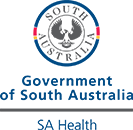Aneurysms
If you have a sudden severe headache or pain in your abdomen, call triple zero (000) immediately and ask for an ambulance.
Key facts
- An aneurysm is a bulge in a blood vessel wall.
- Aneurysms can occur anywhere in your body — the most common sites are your brain and your aorta (a large blood vessel in your chest and belly).
- An aneurysm may not cause any problems, but if it ruptures (bursts), it can be very serious.
- If you have an aneurysm, you can help reduce the chance of it bursting by stopping smoking, taking medicines for high blood pressure or having relevant surgery.
- Talk to your doctor about having a screening test if you have a family history of aneurysms.
What is an aneurysm?
An aneurysm is a bulge or widening in a blood vessel, caused by a weakening of the blood vessel wall. It can happen in any blood vessel, but is seen more often in arteries than veins. An aneurysm usually won't cause any problems if it doesn’t rupture (burst). If an aneurysm bursts, it can be very dangerous, causing bleeding and even death.
Aneurysms can occur anywhere in your body. The 2 main types are aortic aneurysms (affecting the main artery that carries blood from your heart to the rest of your body) and brain aneurysms (also called cerebral aneurysms).
What are the symptoms of an aneurysm?
An aneurysm may cause no symptoms unless it is very large or it bursts. The symptoms of an aneurysm depend on which blood vessel is affected and whether it has burst.
Brain aneurysm
Symptoms of a brain aneurysm may include:
If it bursts, it can cause:
Abdominal aortic aneurysm
An abdominal aortic aneurysm may cause pain in your abdomen, back or side. If it ruptures, it can lead to severe pain, weakness and collapse.
CHECK YOUR SYMPTOMS — Use the Symptom Checker and find out if you need to seek medical help.
What causes an aneurysm?
Aneurysms are more common in some families — you may be at higher risk if you have relatives who have had aneurysms.
Aneurysms are often caused by a gradual weakening of the wall of an artery. Your risk of some types of aneurysms may be increased if you:
- are a smoker
- have high blood pressure
- have heart disease and atherosclerosis (hardening of the arteries)
Aneurysms can also occur with certain health conditions, such as polycystic kidney disease and some connective tissue disorders.
When should I see my doctor?
If you have a sudden severe headache or pain in your abdomen, call triple zero (000) immediately and ask for an ambulance.
If you have a family history of aneurysms, talk to your doctor about whether you may be at risk. In some cases, your doctor may recommend an imaging test to look for an aneurysm.
You should also see your doctor if you have pain that is not going away, such as a headache or abdominal pain.
FIND A HEALTH SERVICE — The Service Finder can help you find doctors, pharmacies, hospitals and other health services.
How are aneurysms diagnosed?
Many aneurysms are found by chance, when you are having tests for other health problems. If you are at risk of aneurysms, your doctor may refer you for a screening test, such as:
- an ultrasound scan
- an MRI scan
- a CT scan
ASK YOUR DOCTOR — Preparing for an appointment? Use the Question Builder for general tips on what to ask your GP or specialist.
How are aneurysms treated?
Treatment will depend on the type of aneurysm and where it is in your body.
If you have a small aneurysm, your doctor may recommend regular check-ups to see if it is getting bigger.
Your doctor may talk about ways you can help stop it from getting bigger or bursting, such as:
- stopping smoking
- treating high blood pressure
- cutting down on alcohol
- not lifting heavy weights
It’s also important to look after your heart and blood vessels if you have an aneurysm. Your doctor may prescribe you medicines to prevent your blood from clotting or medicines to lower your cholesterol.
If your aneurysm is at high risk of rupture, your doctor may suggest surgery. If your aneurysm bursts, you will usually need emergency surgery in hospital.
Can aneurysms be prevented?
Adopting healthy habits can help prevent some aneurysms forming. Try to:
- eat a healthy diet
- stop smoking
- exercise
- take medicines as prescribed for high blood pressure
What are the complications of aneurysms?
If an aneurysm bursts, it is very serious and can cause loss of consciousness and death. Please call triple zero (000) immediately and ask for an ambulance.
Resources and support
Find out more about aortic aneurysm and brain aneurysm.
For help with quitting smoking, call Quitline on 13 7848.
Find out more about living a healthy lifestyle to prevent cardiovascular disease from the Life! program.
You can also call the healthdirect helpline on 1800 022 222 (known as NURSE-ON-CALL in Victoria). A registered nurse is available to speak with you 24 hours a day, 7 days a week.
Other languages
The Department of Health and Aged Care has videos about quitting smoking in a range of community languages.
Read more about quitting smoking in a range of community languages from Health Translations Victoria.
Aboriginal and/or Torres Strait Islander peoples
Find support for quitting smoking for Aboriginal and/or Torres Strait Islander people at iCanQuit.
Learn more here about the development and quality assurance of healthdirect content.
Last reviewed: November 2024



















